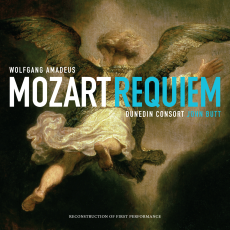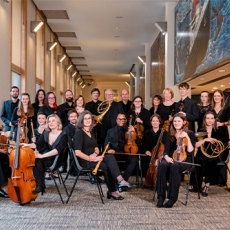Dunedin Consort - Mozart: Requiem - Gramophone Recording of the Month
Purely on grounds of performance alone, this is one of the finest Mozart Requiems of recent years. John Butt brings to Mozart the microscopic care and musicological acumen that have made his Bach and Handel recordings so thought-provoking and satisfying.
As with all of Butt's recordings, however, this Mozart Requiem is something of an event. The occasion is the publication of a new edition - by David Black, a senior research fellow at Homerton College, Cambridge - of the 'traditional' completion of this tantalisingly unfinished work, of which this is the first recording. Sussmayr's much-maligned filling-in of the Requiem torso has lately enjoyed a resurgence in its acceptance by the scholarly community - not that it has ever been supplanted in the hearts and repertoires of choral societies and music lovers around the world. The vogue for stripped-back and reimagined modern completions is on the wane and Sussmayr's attempt, for all its perceived inconsistencies and inaccuracies, is once again in favour in the crucible of musicological criticism. After all, as Black points out in the preface to his score, 'Whatever the shortcomings of Sussmayr's completion, it is the only document that may transmit otherwise lost directions or written material from Mozart'.
Black has returned to the earliest sources of the work: Mozart's incomplete 'working' score, Sussmayr's 'delivery' score and the first printed edition of 1800, which even so soon after the work's genesis was already manifesting accretions and errors that place us at a further remove from Mozart's intentions. For all the textual emendations this engenders, the actual difference as far as the general listener is concerned is likely to be minimal; while we Requiemophiles quiver with delight at each clarified marking, to all intents and purposes what is presented here is the Mozart Requiem as it has been known and loved for more than two centuries.
It is Butt's minute attention to these details, though, that makes this such a thrilling performance. He fields a choir and band of dimensions similar to the forces at the first performance of the complete work on 2 January 1793, little over a year after Mozart's death, and the effect is not unexpectedly to wipe away the impression of a 'thick, grey crust' that was felt so palpably by earlier commentators on the work. Listen, for example, to Mozart's miraculous counterpoint at 'Te decet hymnus' in the Introit or Sussmayr's rather more clumsy imitation in the 'Recordare' and hear how refreshingly the air circulates around these potentially stifling textures.
Butt's outlook on the work is apparent from the very beginning: the gait of the string quavers is more deliberate than limping in the first bar and this purposefulness returns in movements such as the 'Recordare' and 'Hostias'. The extremes of monumentality and meditativeness in the Requiem are represented perhaps by Bernstein and Herreweghe respectively; Butt steers a course equidistant between the two without compromising the work in its many moments of austerity or repose. Paradoxically, Butt's fidelity to the minutiae of the score allows him the freedom to shape a performance of remarkable cumulative intensity, so that the drama initiated in the driving 'Dies irae' reaches a climax and catharsis in the 'Lacrimosa' and is recalled in the turbulent Agnus Dei.
The choir is of only sixteen voices, from which the four soloists step out as required. Blend and tuning are of an accuracy all too rarely heard, even in this golden age of British choral singing. Soprano Joanne Lunn's tone is well nourished, with vibrato deployed judiciously to colour selected notes or phrases; of the other soloists, Matthew Brook's bass responds sonorously to the sounding of the last trumpet (in German 'die letzte Posaune' - the last trombone) in the 'Tuba mirum'. Instrumental sonority, too, is meticulously judged: hear especially the voicing of the brass-and-wind chords during bridge passages in the 'Benedictus' or the shifting orchestral perspectives of the 'Confutatis'.
The couplings are also carefully considered. The first is Misericordias Domini, an offertory composed in 1775 of which Mozart had a set of parts copied in 1791. Sharing with the Requiem its key and gleeful exploitation of contrapuntal techniques, it piquantly demonstrates the advance in Mozart's church style during the last sixteen years of his life.
The disc closes with what purports to be a re-enactment of an even earlier 'first performance' of the Requiem. While the 1793 Vienna concert is well documented, recent research has suggested that the Requiem (or at least some of it) was performed in a memorial to Mozart on 10 December 1791 - only five days after his death. Given the partial state of the work (only the Introit was complete in Mozart's hand), it is supposed that this performance consisted of the Introit and the ensuing Kyrie fugue, for which an amanuensis filled in the doubling woodwind parts. That performance is hypothesised here with slimmed-down vocal and string parts, and with trumpets and drums missing from the Kyrie (on the presumption that the parts hadn't been provided by that time). Starker still than the larger performance, this telling appendix offers a tantalising glimpse of the music that might have been played by Mozart's friends and students as they struggled to come to terms with their loss.


